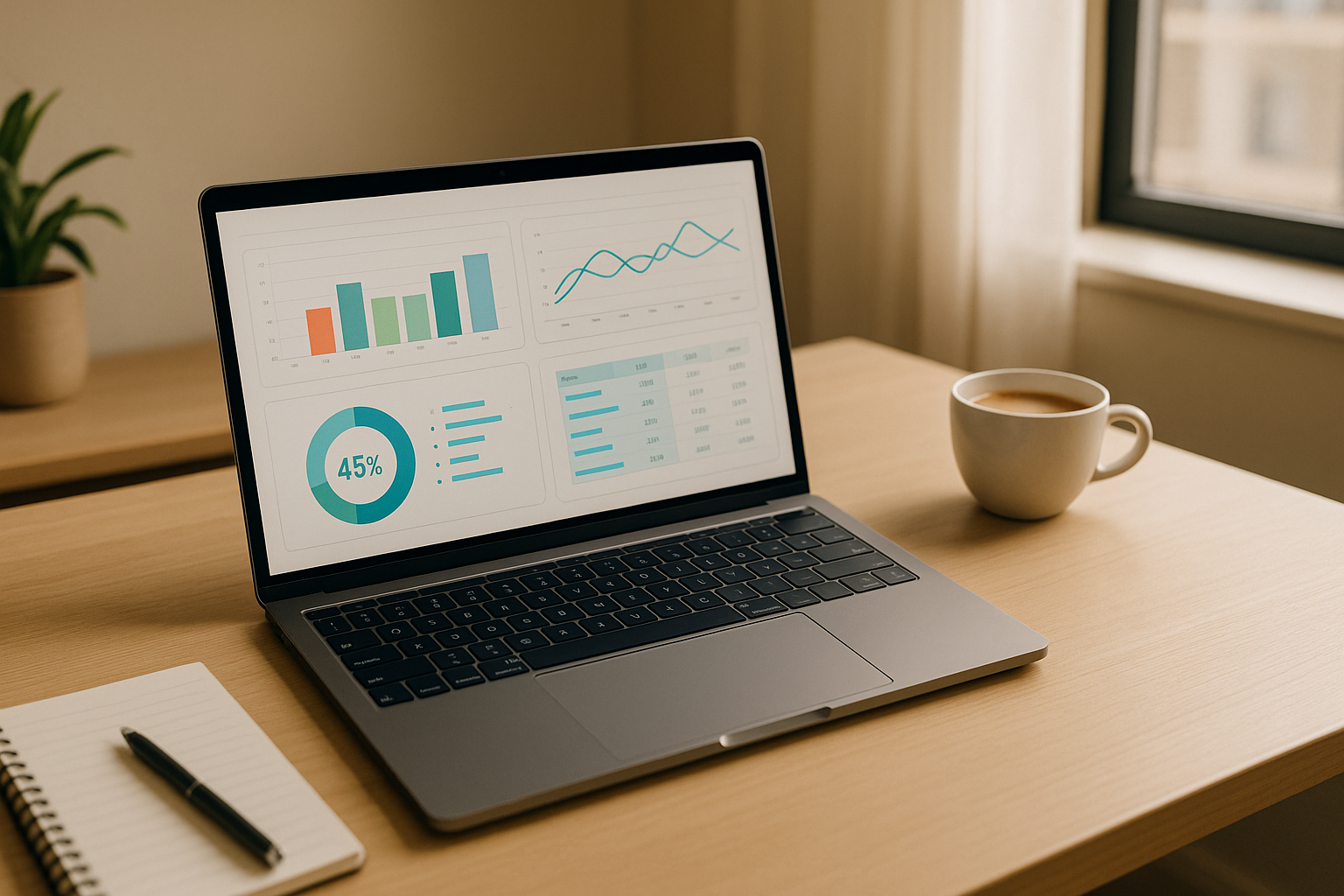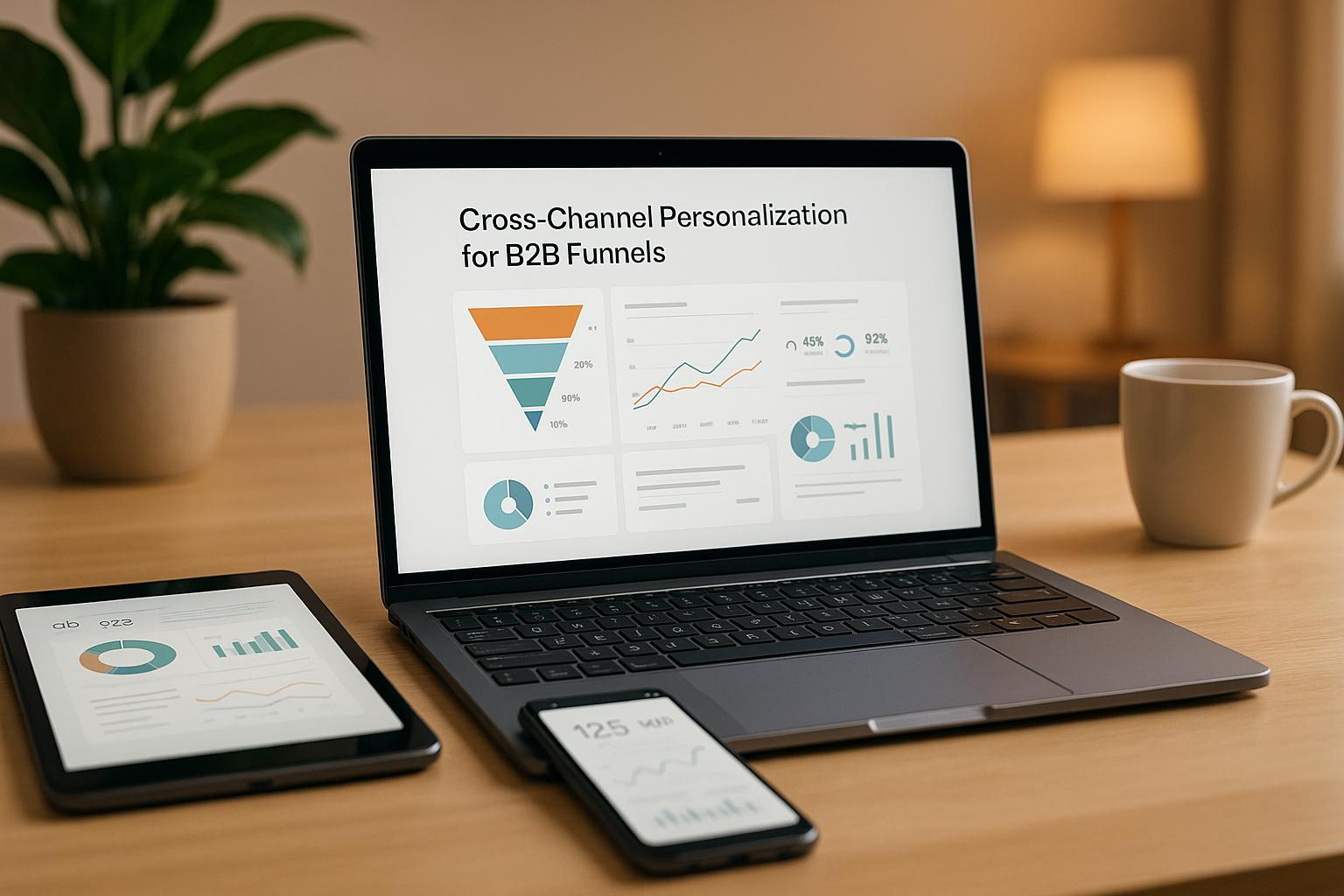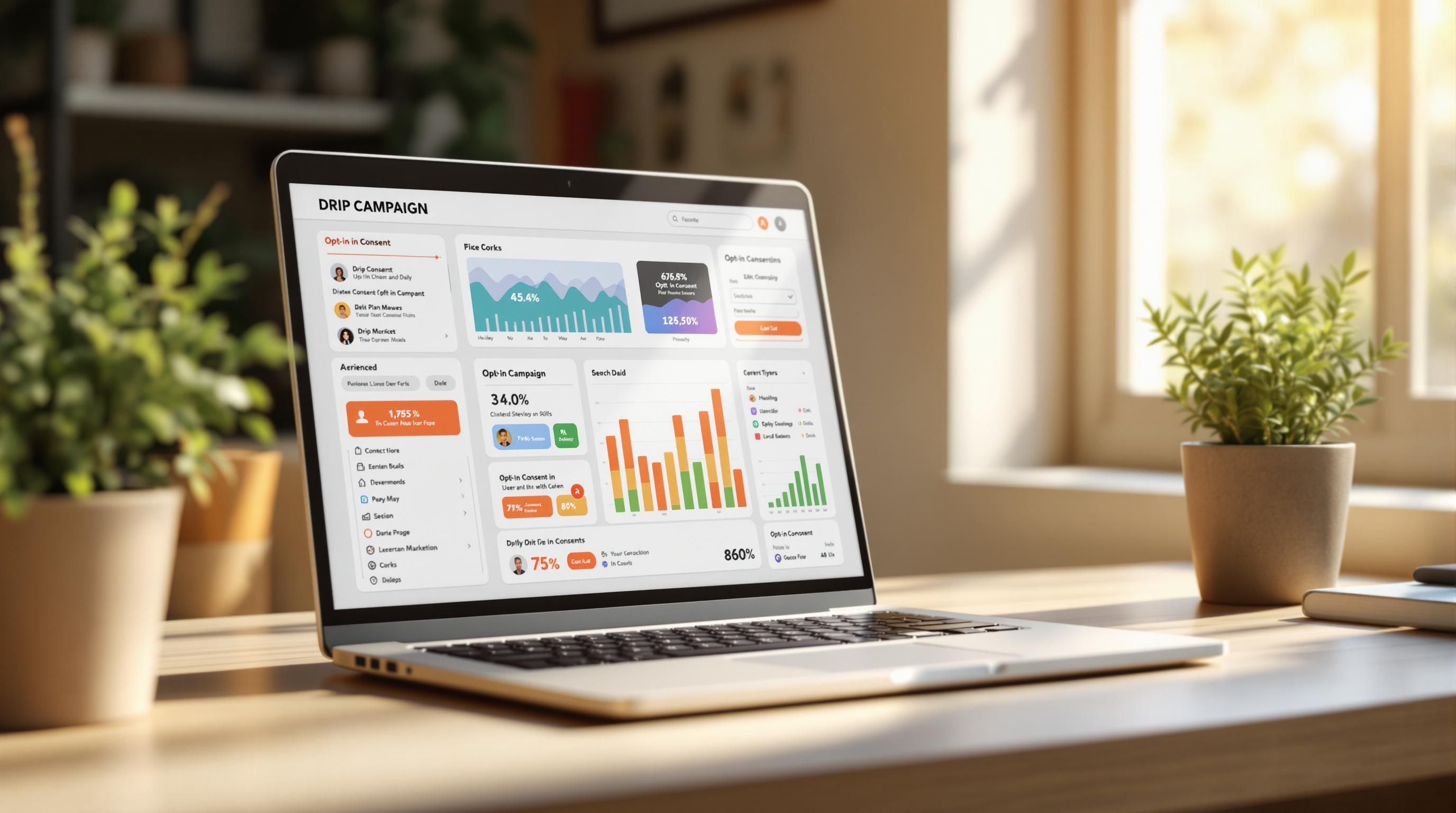Want more conversions? Start by defining clear funnel stages. A well-structured marketing funnel guides potential customers from awareness to loyalty, improving engagement and boosting sales. Here's how:
- Awareness: Attract attention with content like blogs, social media, and ads.
- Consideration: Provide resources like guides, comparisons, and case studies to help prospects evaluate your solution.
- Decision: Build trust with testimonials, clear pricing, and simple checkout processes.
- Loyalty: Retain customers through onboarding, support, and rewards programs.
Why it matters: Clear funnel stages help you deliver the right message at the right time, track progress, and improve customer experience. Use analytics to monitor performance, identify drop-offs, and adjust strategies to maximize conversions.
From Awareness to Conversion: Stages of the Marketing Funnel
Marketing Funnel Basics
A marketing funnel maps out the steps a customer takes from first learning about your brand to making a purchase. Each stage is designed to guide potential buyers closer to conversion.
Main Funnel Elements
The funnel is typically broken into four core stages:
- Awareness Stage: This is where people first encounter your brand. It could be through social media, blog posts, or paid ads. The goal here is to grab attention.
- Consideration Stage: At this point, potential customers are weighing their options. They’re researching, comparing features, and evaluating solutions.
- Decision Stage: Now, they’re ready to buy. They’re checking prices, reading reviews, and might just need a final nudge to commit.
- Loyalty Stage: After the purchase, it’s all about keeping them engaged so they become repeat buyers and even advocates for your brand.
Why Clear Funnel Stages Matter
Defining each stage of the funnel can make a huge difference in your marketing efforts:
- Better Lead Quality: When you know where someone is in the funnel, you can focus on nurturing the right leads. Each stage naturally filters out less interested prospects.
- Smarter Resource Use: By understanding where customers are in their journey, you can create targeted content and automate tasks like follow-ups to save time and effort.
- Improved Customer Experience: Tailoring messages to match a prospect’s stage helps you address their specific concerns, reduce friction, and provide timely support.
- Measurable Progress: With clear stages, it’s easier to track how well prospects move through the funnel, spot problem areas, and measure your marketing ROI.
The secret to an effective funnel? Align it with how your customers make decisions. When your funnel reflects their natural journey, transitions between stages feel smooth, and conversion rates improve. This structure lays the groundwork for crafting detailed customer journeys.
Step 1: Map Customer Journeys
Outline the steps customers take as they move from discovering your brand to making a purchase.
Identify Customer Touchpoints
Pinpoint where and how potential customers interact with your brand. These touchpoints can include:
- Website Analytics: Monitor metrics like page views, time spent on site, and navigation paths.
- Digital Interactions: Analyze data from social media, email campaigns, and customer service to uncover patterns.
- Sales Team Insights: Collect feedback from your team about common customer objections and decision-making factors.
Build Customer Profiles
Develop detailed personas by examining key demographics and behaviors. Here's a breakdown:
| Profile Element | Key Data Points |
|---|---|
| Basic Info | Age, location, job title, income level |
| Goals | Main objectives, challenges they need solved |
| Buying Habits | Research methods, purchase timelines |
| Pain Points | Common obstacles or hesitations |
Use this data to craft content that speaks directly to your audience at each stage of the funnel.
Match Stages to Customer Needs
- Awareness Stage: What problems are customers trying to solve? Offer educational content that addresses their initial questions and concerns.
- Consideration Stage: What criteria do customers use to compare options? Highlight your advantages and address objections with clear, persuasive materials.
- Decision Stage: What final factors influence their purchase? Provide content that reassures them, answers lingering questions, and builds trust in your offering.
sbb-itb-a84ebc4
Step 2: Set Up and Improve Funnel Stages
Once your customer journey is mapped out, it’s time to refine each stage of your funnel using these strategies.
Awareness: Grab Their Attention
Create content that speaks directly to your audience’s needs and challenges. Use a mix of formats to reach them on various platforms:
| Content Type | Purpose | Key Metrics |
|---|---|---|
| Blog Posts | Inform and educate | Time on page, shares |
| Social Media | Boost brand visibility | Engagement rate, reach |
| SEO Content | Drive organic traffic | Rankings, organic traffic |
| Paid Ads | Target specific groups | Click-through rate, CPA |
Make sure your messaging aligns with the pain points you identified in your customer profiles. Focus on showing that you understand their challenges - without immediately pushing for a sale. Gradually nurture their interest in your solution.
Consideration: Build Their Interest
Help prospects see why your product or service is the best fit. Offer resources that inform and guide their decision-making process:
- Publish detailed guides to simplify complex topics.
- Provide interactive tools that let them compare options.
- Share case studies or examples showcasing how you’ve solved similar issues.
- Highlight your product’s key features and advantages.
Decision: Seal the Deal
When prospects are ready to buy, eliminate any obstacles that might hold them back.
What to focus on:
- Customer testimonials that build trust.
- Certifications or badges that show credibility.
- Performance guarantees for peace of mind.
- Security assurances to address concerns.
Key conversion elements:
- Transparent pricing details.
- A simple, hassle-free checkout process.
- Multiple payment options for convenience.
- Clearly visible support channels for assistance.
Loyalty: Turn Customers into Advocates
Keep your customers engaged and encourage them to stick around with thoughtful strategies:
| Strategy | How to Implement | Goal |
|---|---|---|
| Onboarding | Send a personalized welcome series | Faster product adoption |
| Education | Offer regular training sessions | Boost product usage |
| Support | Provide proactive assistance | Higher satisfaction |
| Rewards | Create a loyalty program | Better retention |
Build a communication plan that keeps customers engaged without overwhelming them. Offer value through perks like exclusive content, early access to new features, or tailored recommendations based on how they use your product.
Finally, monitor these strategies and refine your funnel as you gather more data.
Step 3: Track Results
Tracking your results helps you understand how well your marketing funnel is working. By monitoring key performance indicators (KPIs) at each stage, you can adjust your strategy based on what the data shows.
Focus on the Right Metrics
Each stage of the funnel has specific metrics that reveal how users are behaving and advancing:
| Funnel Stage | Key Metrics |
|---|---|
| Awareness | Traffic sources, bounce rate, page views |
| Consideration | Time on site, return visits, content engagement |
| Decision | Conversion rate, checkout process efficiency, sales cycle length |
| Loyalty | Customer lifetime value, retention rate, referrals |
These metrics help you evaluate performance and identify where improvements are needed to align with your business goals.
Tools for Tracking
Set up analytics tools to monitor user actions like newsletter signups, downloads, or demo requests. These tools give you clear insights into how users move through your funnel and where they might drop off.
Stay on Top of Updates
Regularly review your key metrics, update your strategies based on the data, and keep a record of any changes you make. This ensures you’re always improving and keeping your funnel effective.
Marketing Funnels Directory: Tools and Resources

Once you've mapped and tracked your funnel, it's time to fine-tune each stage. The Marketing Funnels Directory offers a selection of tools designed to improve every step of your funnel, from building awareness to encouraging customer loyalty. Each resource is crafted to align with specific stages of the customer journey.
Analytics and Tracking Tools
Take your tracking setup further with platforms that provide in-depth insights, including visual journey tracking, heatmaps, and A/B testing:
| Tool Category | Core Function | Ideal For |
|---|---|---|
| Funnel Mapping | Visual journey tracking | Defining and refining stages |
| User Behavior | Heatmaps and recordings | Analyzing customer actions |
| Ad Performance | Attribution tracking | Improving marketing campaigns |
| Conversion | A/B testing and analytics | Enhancing sales processes |
Learning Resources
To help you master marketing funnels, the directory also offers a range of educational materials:
- Expert Articles: In-depth guides on funnel strategies and improving conversions.
- Industry Courses: Step-by-step training for building and managing funnels effectively.
- Strategy Books: A curated selection of books focused on marketing funnels.
Advanced Optimization Tools
Explore tools designed to map touchpoints, analyze user behavior, improve conversion paths with A/B testing, and track ad performance using automated attribution.
Regular Updates
Keep up-to-date with newsletters, updated tools, and the latest expert-written articles to ensure your funnel stays ahead of the curve.
Conclusion: Build Better Funnels
To create effective funnels, align each stage with how customer behaviors are shifting. A well-structured funnel addresses customer needs at every step, ensuring it remains relevant and effective over time.
Use tools that allow for personalized interactions and prioritize constant testing to fine-tune your conversion strategies. This process, backed by strong analytics, is key to staying on track. Focus on mapping customer journeys, improving each stage of the funnel through testing and personalization, and using analytics to monitor and enhance performance.
The best funnels adapt to changes in customer behavior and market trends. Leverage analytics to identify where users drop off and adjust your strategy to keep them engaged, all while maintaining a clear path to conversion. By consistently offering value at every stage and staying flexible to market shifts, you’ll build a funnel that supports long-term growth.


